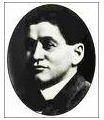Engineer Biographies - Life of Frederick Lanchester
Early years
Frederick Lanchester’s first job was in his birthplace England – London and Birmingham to be precise. He was not a very bright student academically speaking but he did win two scholarships to different colleges graduating in 1888. In the same year, he got his first job – working as a draftsman in a Patent Office – and his first patent for an isometrograph - a geometrical design instrument. Towards the end of the same year he began working for the Forward Gas Company where his work with cars and engines began. He would continue to work here till 1893, inventing and patenting many new techniques. He resigned when he felt the job was interfering with his own research and experimentation.
First Cars & Awards
Lanchester built his first petrol driven car with a 5 bhp engine in 1896 which proved to be rather dissatisfactory. He made changes and designed an 8 bhp engine for the car. The car had an epicyclic gearbox which was a revolution at the time. He sold his house to raise finances and developed a whole new car around this new engine with his own unique design of cantilever suspension. This car was finished in 1898 and won the Gold Medal at the Automobile Exhibition and Trials at Richmond. The next year, 1899, he started the Lanchester Engine Co. along with his brothers. They manufactured cars that were different mechanically and visually. Lanchester produced cars with a 10 hp engine till 1905. During this time he also built Britain’s first motor boat in 1904.
Inventions and Improvements
The company, however, went bankrupt sometime 1905, after producing 350 cars and was reformed as the Lanchester Motor Company. After this, Lanchester produced a 20 hp engine and a 38 hp engine. He was a perfectionist and continued to improvise on all his work thereby inventing and adding fuel injection, turbo engines, steering wheels and what are now known as disc brakes, among many other things. In 1910 Frederick resigned and the company was taken by his brother. It continued to manufacture cars and was the first company to export left-hand drive cars in 1921. In 1931, the company was acquired by Daimler.
Aviation interest
It has to be said that Lanchester also concentrated on aerodynamics, even before he started his own company. However, in those issues Lanchester, sadly, was much ahead of his time. In fact, he developed a ‘theory of flight’ in 1892 but was dissuaded from publishing since it was considered too ‘outlandish’ a field for an engineer (the first successful flight would happen 11 years later). His theory today is the basis of aerodynamics and the modern aerofoil theory but was rubbished by the Physical Society in 1893. He continued work in aerodonetics, aircraft stability and his own ‘phugoid theory’ eventually publishing ‘aerial flight’ in 1907-08, after which he co-designed and built an experimental aircraft which, unfortunately did not perform and failed its first flight in 1911. After this, Lanchester stuck to the theoretical aspects of studying aviation. Five years later he developed what are today known as ‘Lanchester Power Laws’ – which he published in his book Aviation in Warfare: The Dawn of the Fourth Arm. These laws are what founded the basis of Operations Research.
Frederick Lanchester

